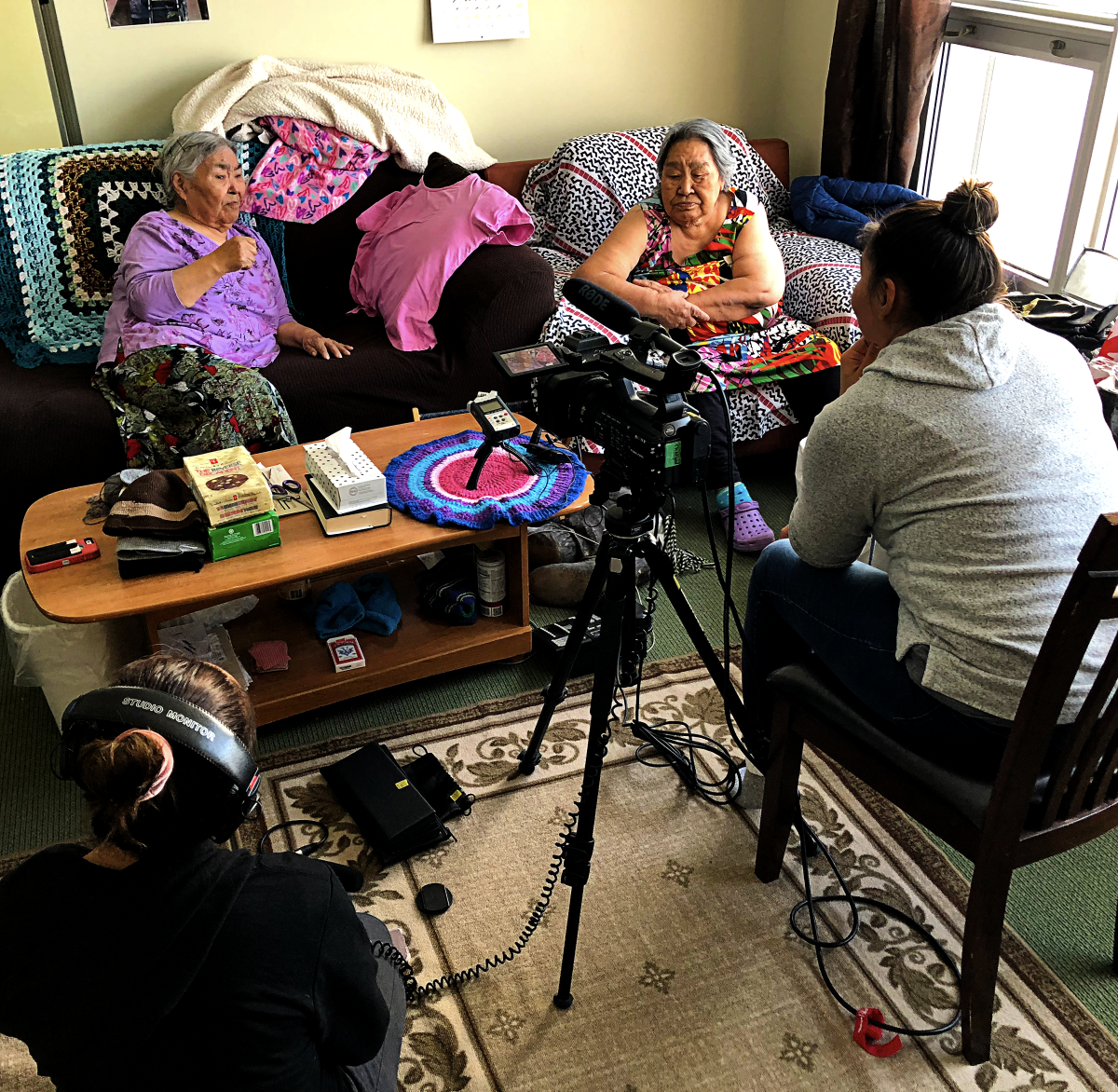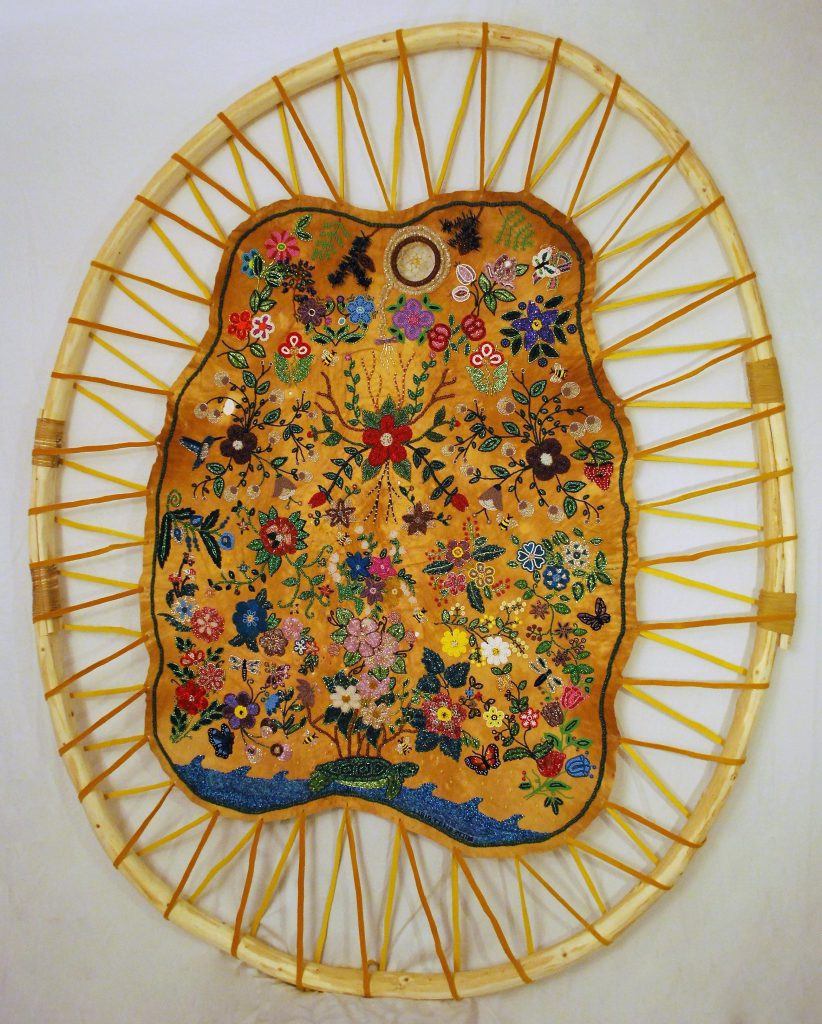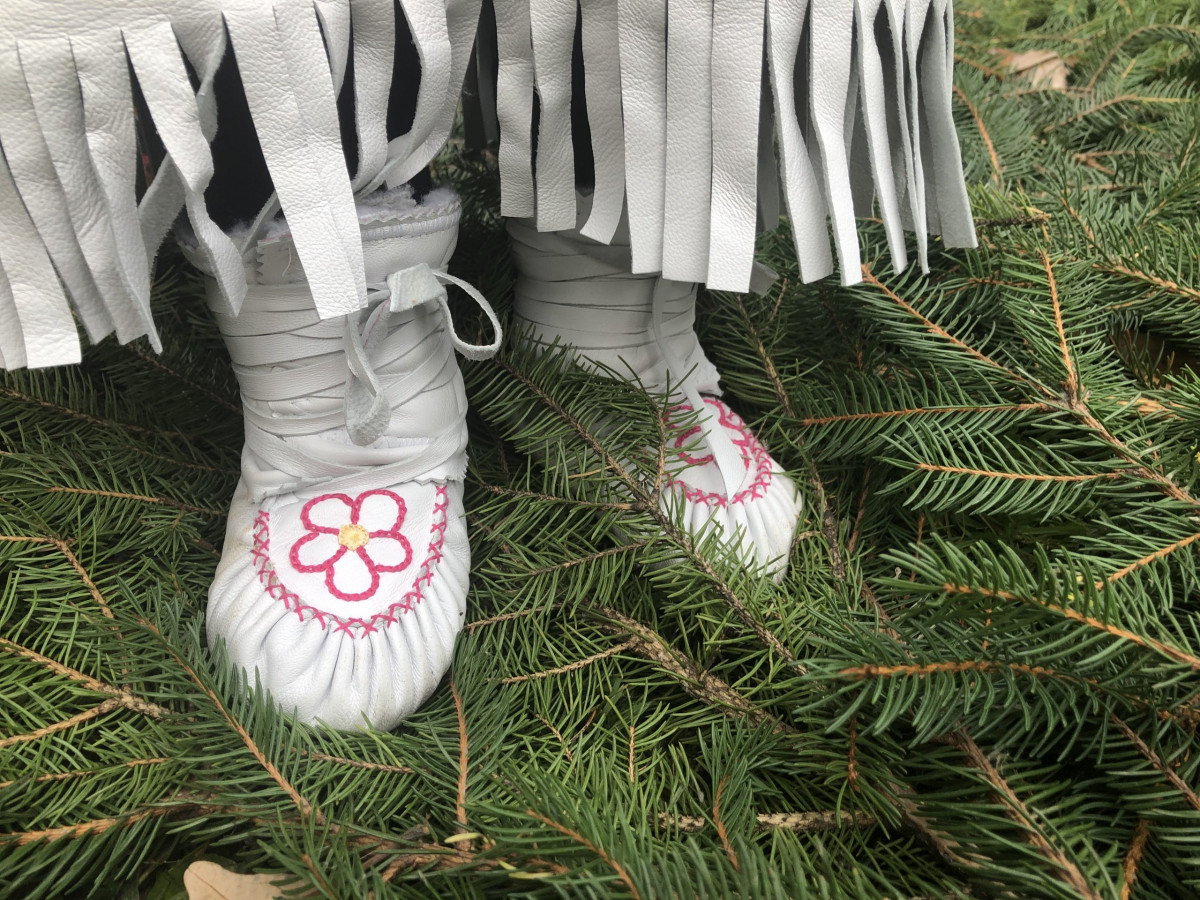New virtual initiative aims to improve Indigenous students’ access to post-secondary education
The initiative aims to mix Indigenous knowledge systems into the classroom by incorporating more outdoor learning. Courtesy FPPSE
The First Peoples Post-secondary Storytelling Exchange combines storytelling and filmmaking to push for more inclusive learning
“When I got older, I learned that my name is actually shared by many people. All of the oldest children in every branch of our family holds the name Pasha,” says Pasha Partridge in her film The Story of Pasha. As she narrates, the sounds of seagulls and soft waves crashing against a shore background her voice. “The name is special and unique, and there’s a strong story to it,” she says.
“I wanted to educate people about the importance of Inuit names and cultures,” said Partridge, speaking about the film. “My name is Pasha, named after my grandmother, and that, in turn, gives me her spirit because I hold her name. So I call my mum my daughter because I had her mother’s name. So that’s the importance of the Inuit name, and I wanted to highlight that importance in the film.”
Her film is a part of a larger mosaic of elements of the First Peoples Post-secondary Storytelling Exchange—a new project initiative that combines different forms of storytelling and filmmaking to attempt to create more responsive post-secondary education for Indigenous students. For the project, over 100 people from First Nations, Inuit and Métis communities shared their individual narratives about education and learning at school, college, university, at home and on the land. Their experiences were collected by researchers, and are currently presented together on the FPPSE website—which launched on Feb. 16.
Using multimedia to bridge an educational gap

The narratives, in their various forms, range from topics such as the “Sixties Scoop”—the large-scale removal of Indigenous children from their homes, and their subsequent adoption into predominantly non-Indigenous families—to the significance of Indigenous hunting practices to Indigenous communities.
Michelle Smith, the project lead and principal investigator for FPPSE, said during a press conference on Feb. 16 that the main objective for all the narratives is the same: to educate others on Indigenous perspectives and to center these experiences.
Besides film, some of the narratives are conveyed through audio and text. Some of the main themes, concerns and recommendations from the narratives were also collected and compiled by the researchers and then showcased on the website.
These themes and concerns mainly focus on the different educational barriers Indigenous students face: “There’s a significant gap in education outcomes between Indigenous students and non-Indigenous students,” said Smith. “We were seeing systemic barriers that were preventing students from being able to get into the programs of their choice—particularly science and math. We were also seeing a lack of visibility and presence of Indigenous experiences in colleges.”
In Quebec, 25 per cent of non-Indigenous people have university degrees, while only 8 per cent of Indigenous people do. In 2011, almost 65 per cent of the non-Indigenous population aged 25 to 64 had a post-secondary qualification—compared to 45 per cent of First Nations and 28 per cent of Inuit living in Inuit Nunangat. Of these, only 5 per fect of First Nations living on reserves and 5 per cent of Inuit obtained a university degree, according to Statistics Canada.
Smith said the project aims to advocate for Indigenous students and to create a dialogue with post-secondary institutions. She hopes the project will push for change—so colleges and universities become more responsive to Indigenous students’ needs and ambitions.

Indigenous students feeling isolated and alienated in post-secondary institutions
FPPSE research assistant Kahawihson Horne hopes the project can create a place for Indigenous students at the table. Horne faced tremendous difficulty as a student in post-secondary school—especially after she had to transition from learning about Mohawk subjects, history and social studies in her earlier education to taking non-Indigenous classes in her post-secondary education.
“I was forced to watch Kanehsatake: 270 years of resistance,” she said. This film documents part of the Oka crisis: when land-defenders from the Mohawk Nation came together in protest when the inhabitants of Oka, Quebec intended to expand a golf course and develop townhouses onto Indigenous sacred lands.
“It’s really difficult to watch if you’re from Kanehsatake. Growing up, for my community, that event was considered a tragedy—but when I watched it in CEGEP at Dawson, the students behind me would laugh at the expense of the people who were in the documentary,” she added.
In addition to this, she said she felt a general tension in those classrooms—a sense of isolation, a sense that she didn’t belong and that she was “deeply inconvenient.” This wasn’t an isolated experience: most of her cohort of fellow Indigenous students left post-secondary studies and went onto pursue jobs instead because they all encountered extremely similar negative experiences, she said.
She also mentioned that her mother, who went to school days after the Oka crisis, similarly left post-secondary education early. “She didn’t want to pursue her education journey because it was a dehumanizing experience for her. In some ways, a terrifying experience.”
“You’ve been told that you have to be in the room with these people, and then you walk in and there’s a table or a place for everybody, but just not for you [...] There’s nothing more emotionally rattling, unsettling or painful as this,” she said.
Horne participated in the FPPSE in hopes of rectifying both her and her mother’s experiences, to “right the wrongs.” According to her, it’s not just about creating spaces for Indigenous students, it’s also about creating spaces where they feel unreservedly comfortable.

According to both Smith and Morgan, a common issue students brought up was being tokenized in the classroom—students recounted that they would often be called upon to speak about Indigenous history.
Partridge, who participated in the project as a research assistant as well as a filmmaker, says she remembered reading these experiences from participants in the project and deeply relating with them. Not only did she relate to feelings of being tokenized, but also to the feelings of homesickness that many participants in the project expressed.
She initially attended John Abbott College because of its large Inuit population: “I wanted to feel closer to other Inuit after moving away from my community at a young age.”
After graduating from JAC, she moved onto McGill, which she left after only a year of studies.
“I had a really difficult time figuring out how to register for classes, and I just felt very alone. [At] John Abbott College, I was able to go to the Indigenous Resource Centre and ask for help and I got the help instantly, but at McGill, I felt like I had to hunt for my help,” she said. McGill University doesn’t have an Indigenous resource centre.
She mentioned that one form of support was a fellow Inuit student in her year who helped motivate her—she said if she didn’t have this support, she may not have made it through the first year at all.
The filmmaking part of the project helped her discover a love for the medium. After working with Indigenous filmmakers, like Glenn Gear and Courtney Montour, she discovered a newfound passion for filmmaking and says she will perhaps pursue it in the future.“Ultimately, the project not only helped me learn how to start talking about educational experience, but it also helped me gain confidence in being myself,” she said.
“No more hierarchies of knowledge”
A significant part of the FPSSE was to highlight Indigenous knowledge systems and approaches to teaching, said Smith.
“No more hierarchies of knowledge,” she said. “There are remarkable things happening in community, there are knowledges, and ways of doing and being, that have helped people survive for generations. This needs to be acknowledged.”
Horne works as a teacher’s aide at a Kanien’kéha elementary-level immersion school—the school’s mission is to produce speakers of her language and to protect the Kanien'kehá:ka culture. In her classrooms, she said that she likes to bring her history and culture into an academic setting and make it more personal for the students. She uses the practice of gardening, for example.
She teaches about the Three Sisters, a gardening system that is based on the mutual interdependency of the plants—specifically of beans, squash and corn. However, she said this, and any other Indigenous teachings, have to go beyond just an academic setting, she said: “You have to bring it into your home, bring it into your garden.”
This is why, to her, Indigenous knowledge systems and Western education are “antithetical.”

“You can’t bring Indigenous knowledge systems and Western-style academics into the colonial or western ballpark and expect them to be complementary,” she said.
Indigenous knowledge shouldn’t be taught as a “complementary aspect” to Western education, she emphasizes, but rather as its own separate practice that Indigenous students should have an option to access.
“It shouldn’t be taught on a board [...] it should be taught outside, it should be a lived experience,” she said.
Smith ultimately hopes the exposure and promotion of these knowledge systems, together with all of the other aspects of the project, can help to validate, value and celebrate Indigenous approaches to teaching, and bring confidence to the students learning about them.
“Students who are going into post-secondary education should not have to choose between engaging with Western knowledge systems whilst pursuing post-secondary, and learning their own culture and knowledge,” she said.
Smith said that uplifting and normalizing these systems, together with acknowledging and working against the challenges that Indigenous students face in post-secondary, are essential steps to take in the path moving forward.



_600_375_90_s_c1.JPG)